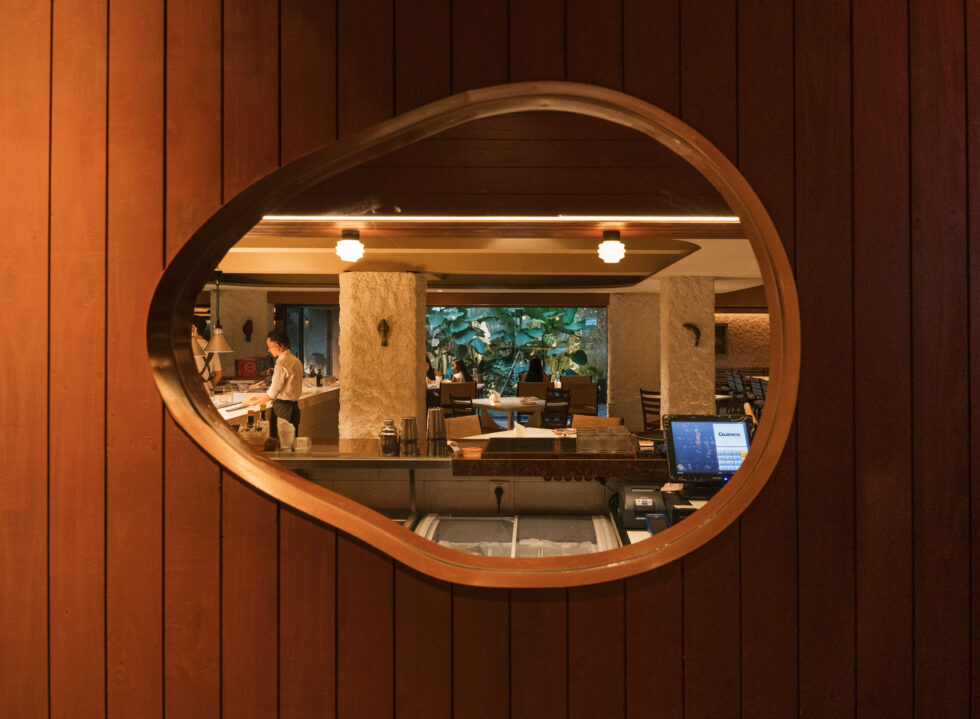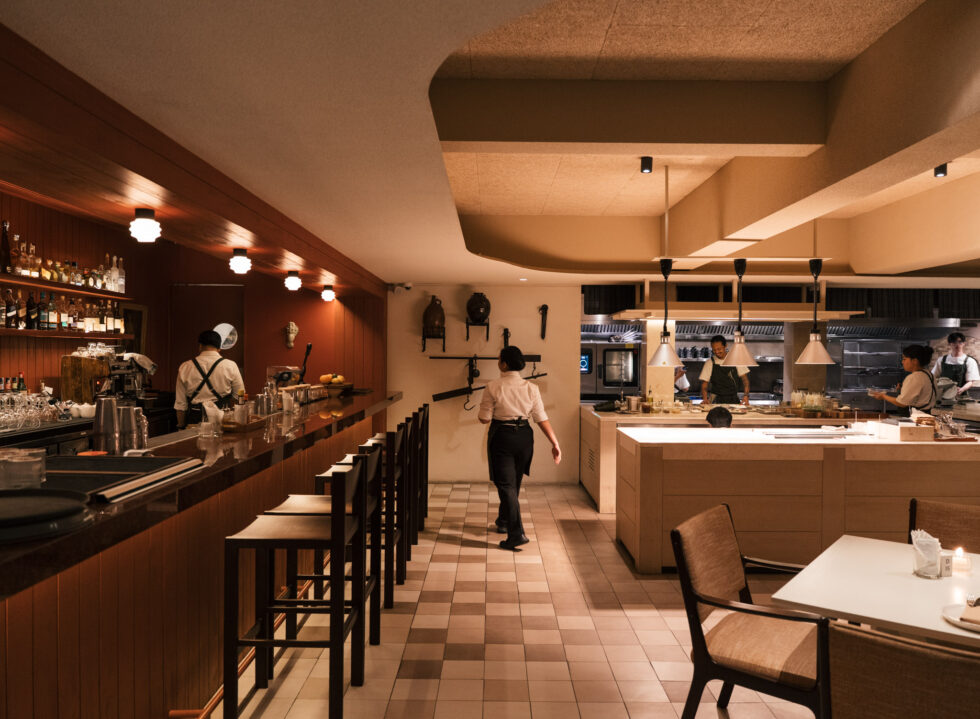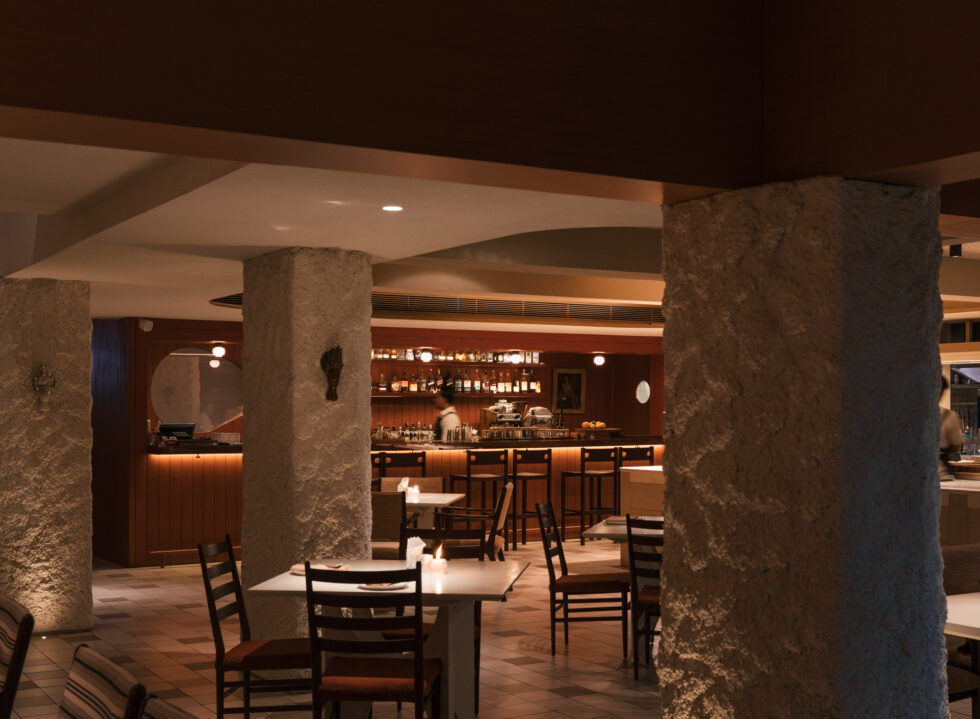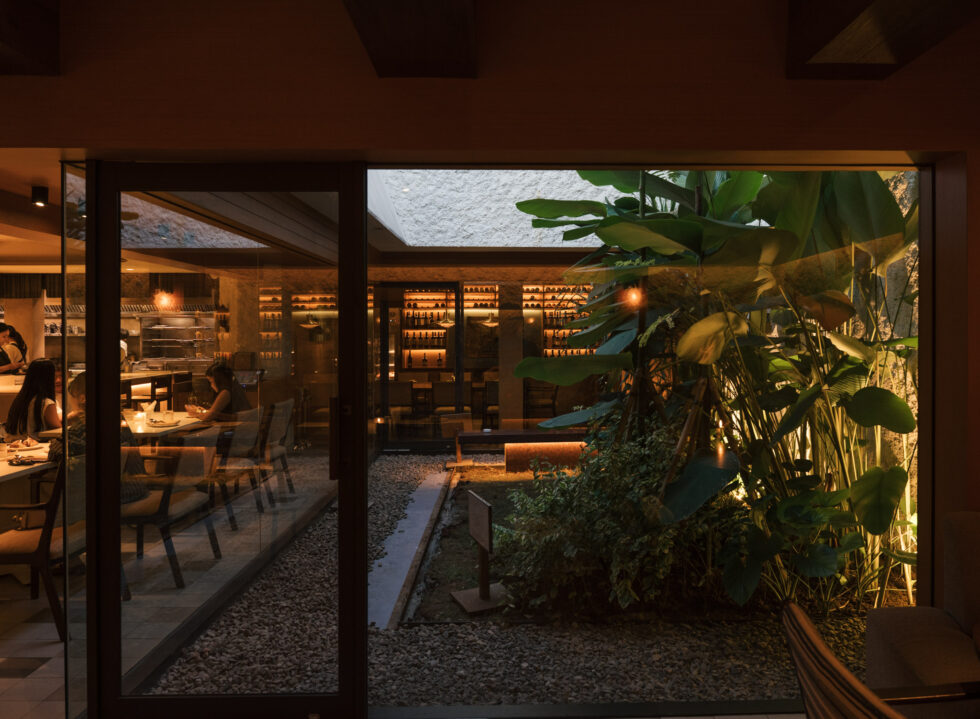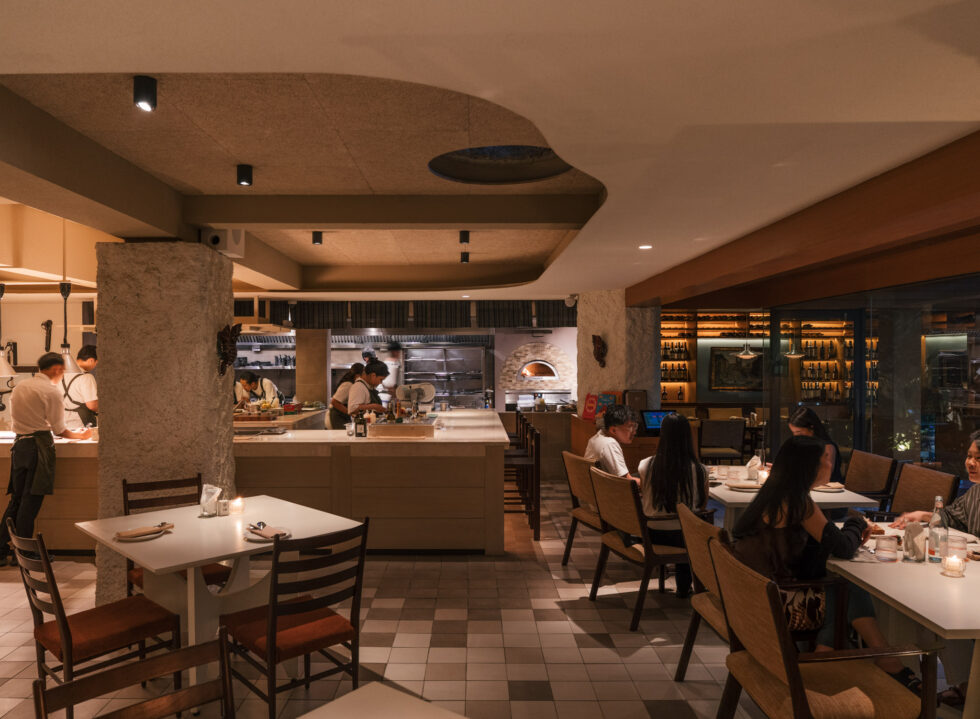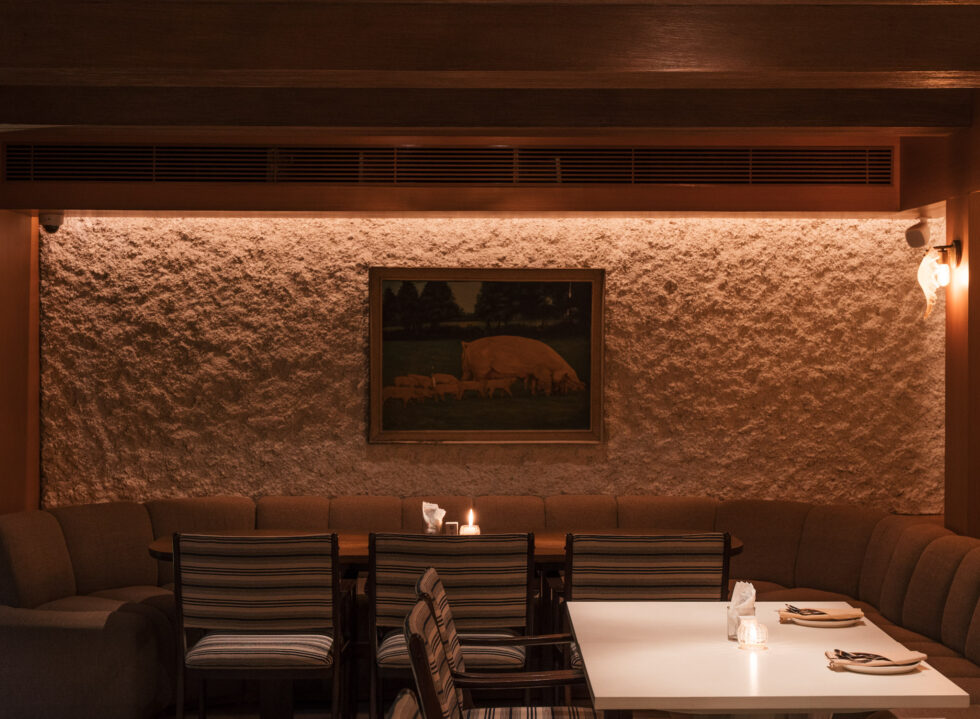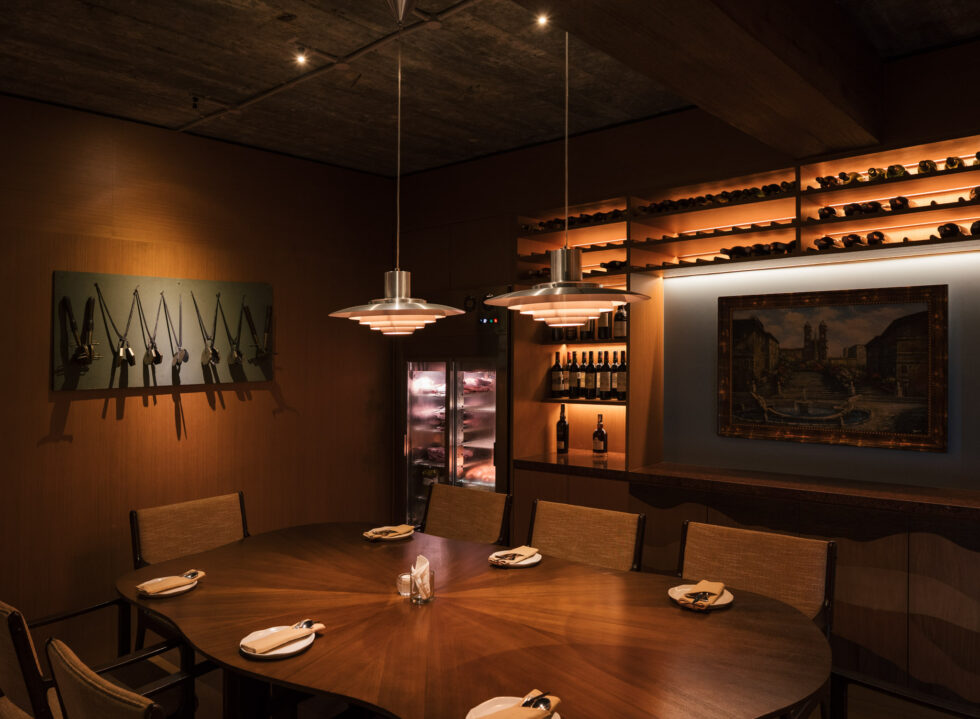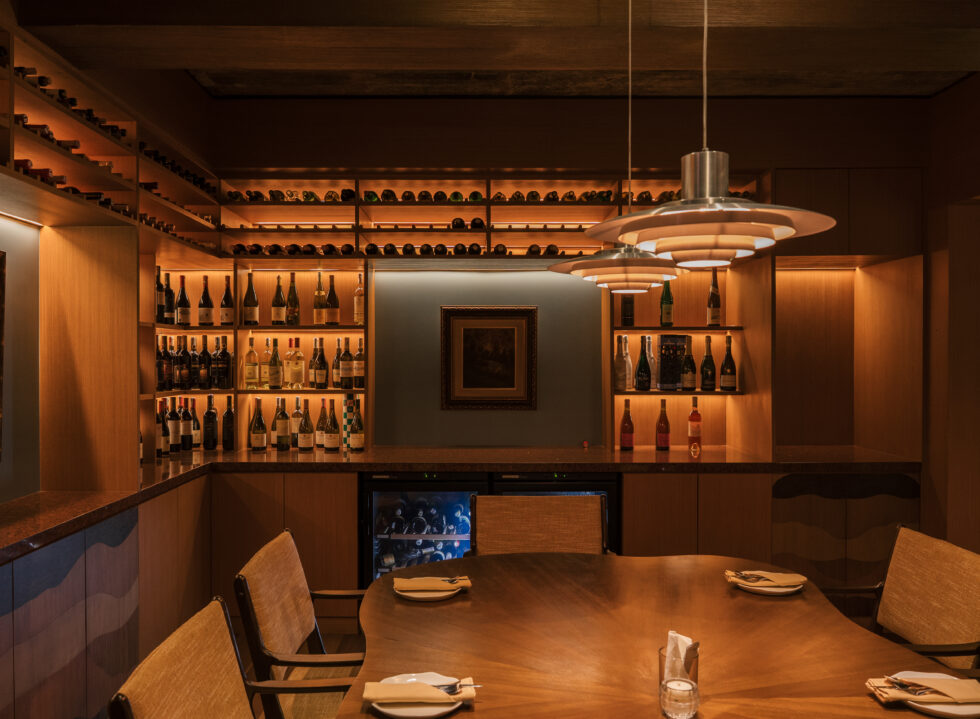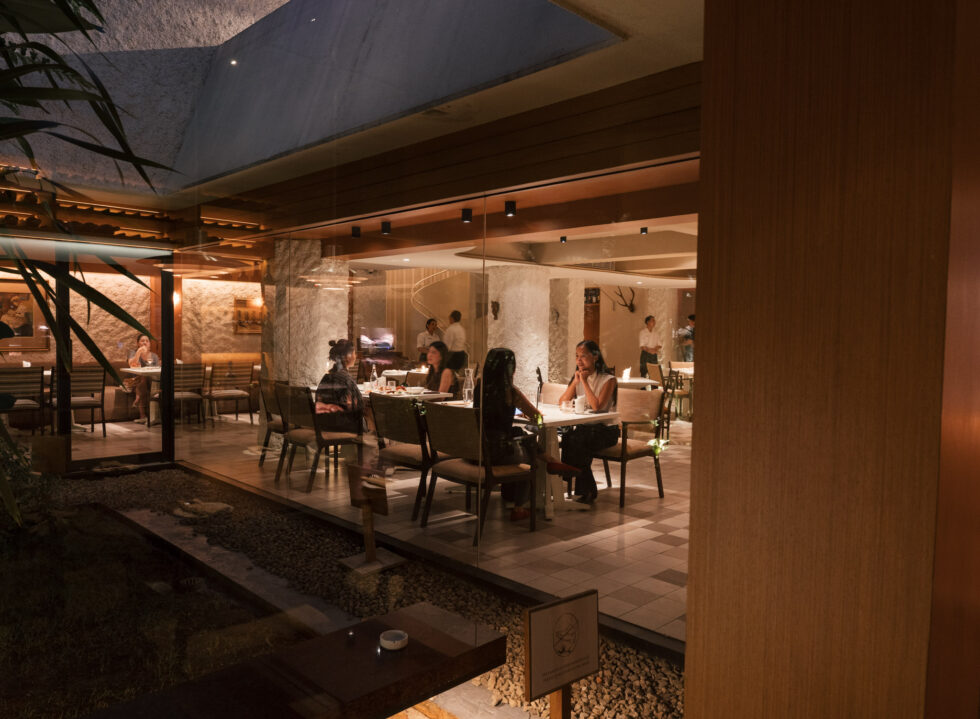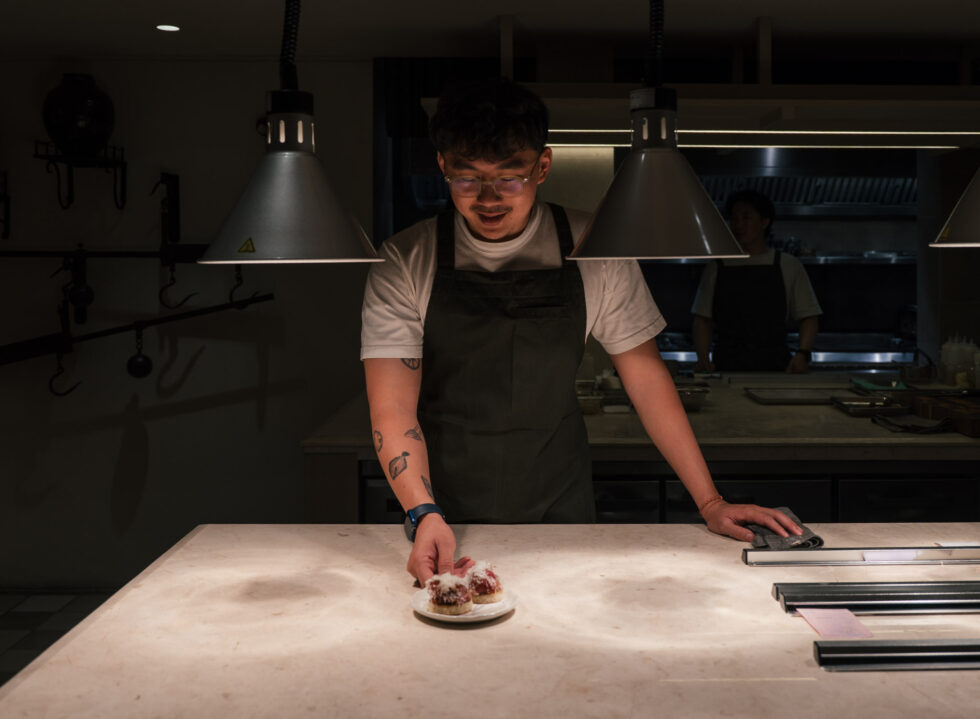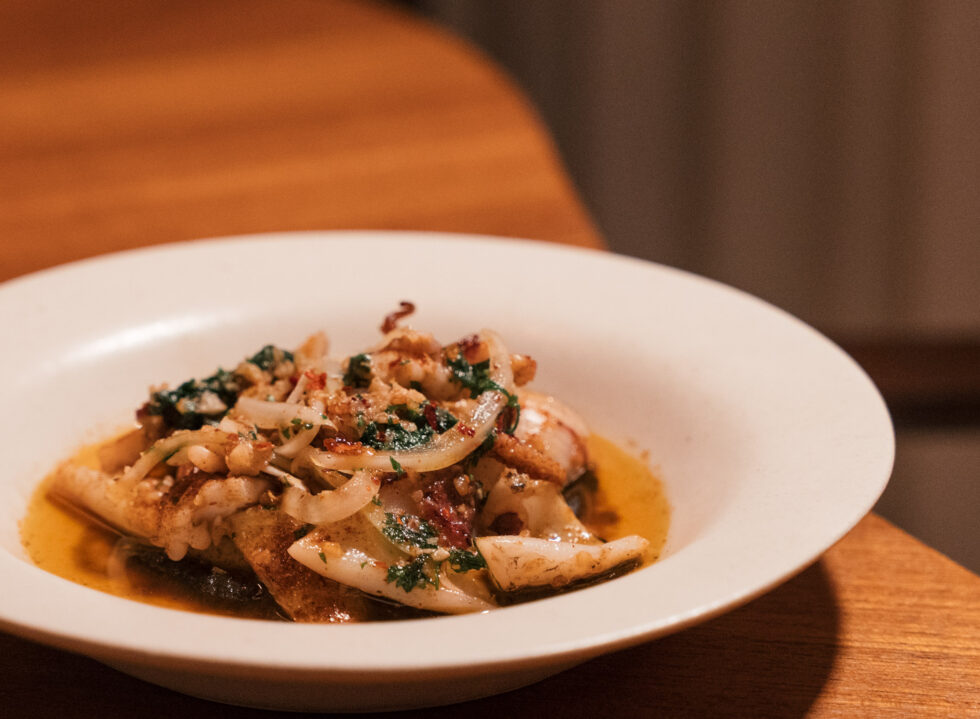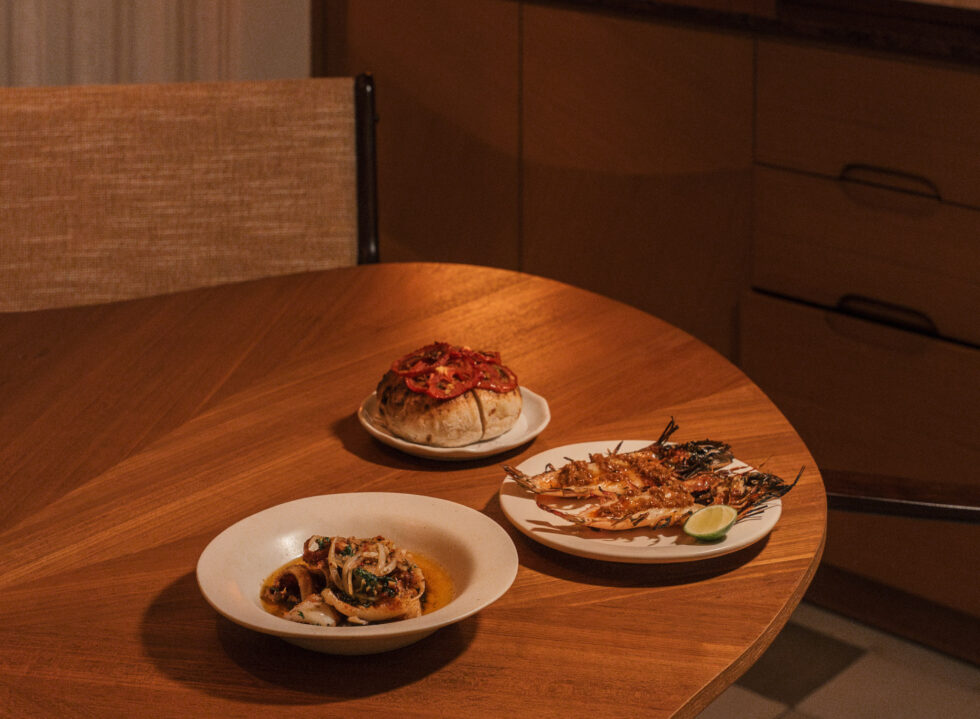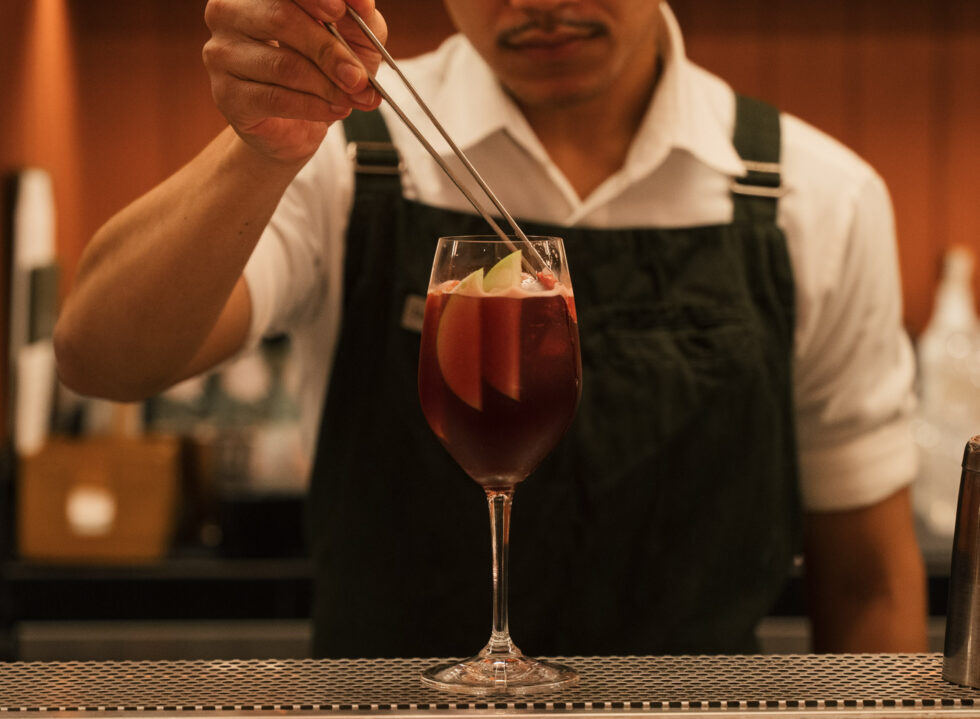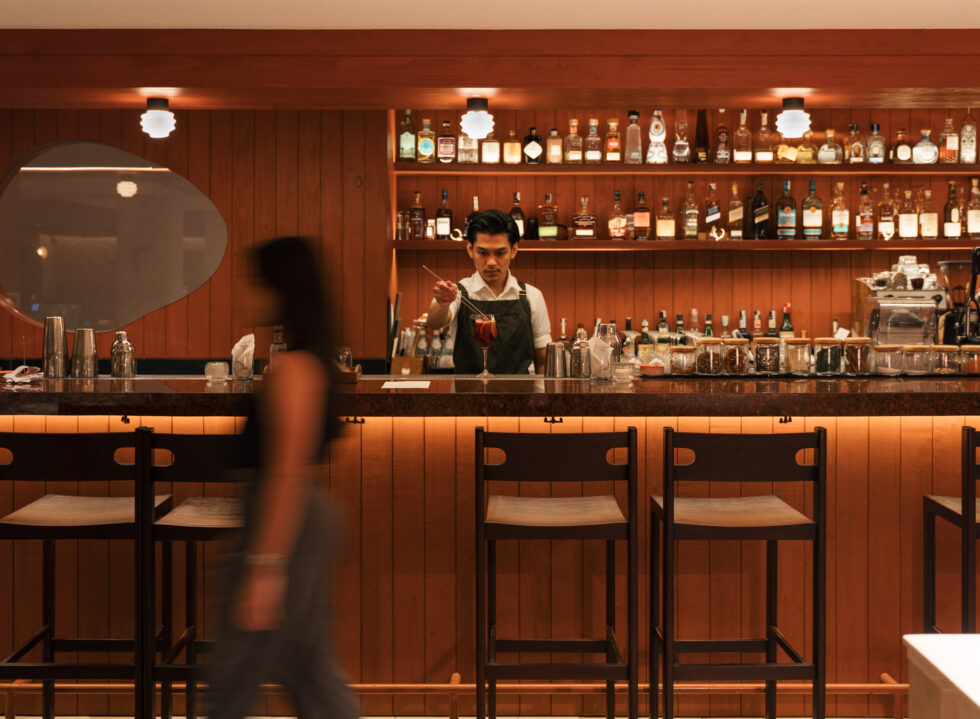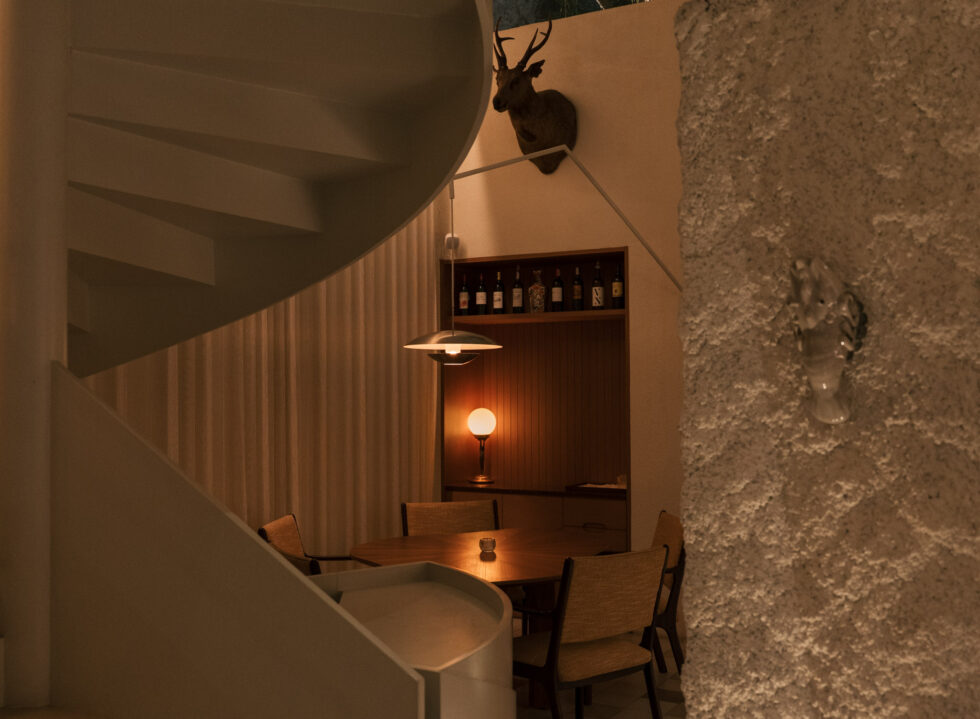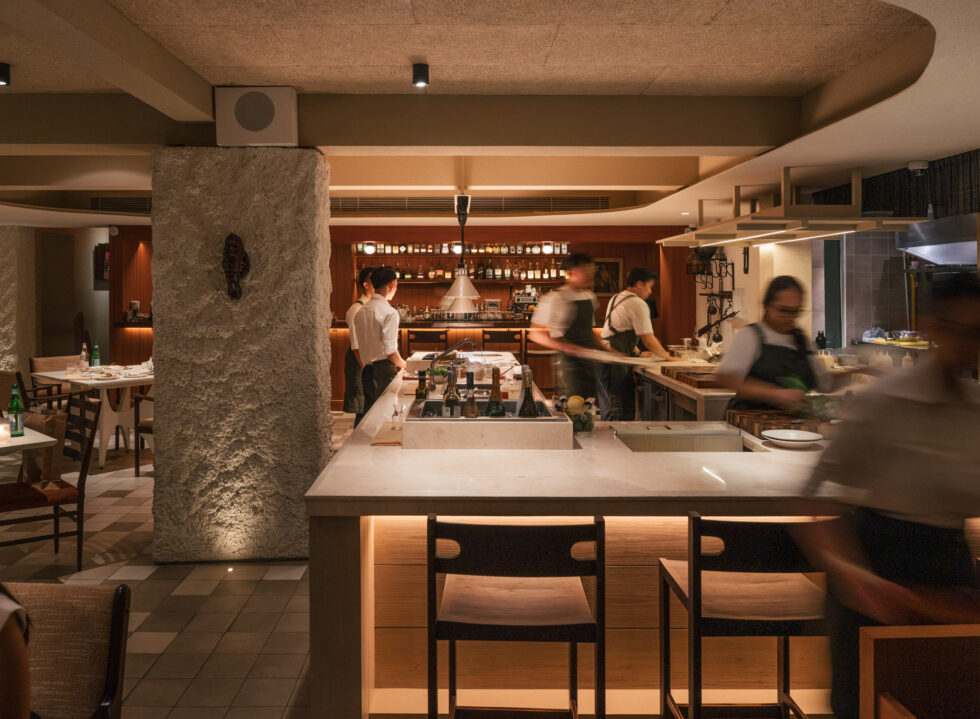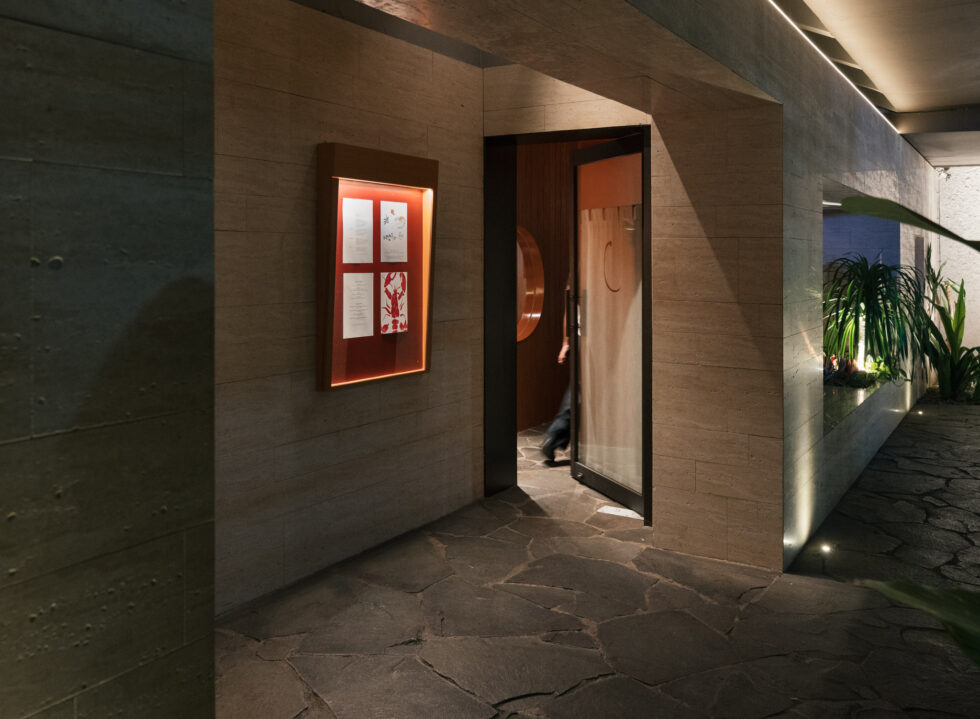Chef Ryan Thejasukmana isn’t particularly fussed over the common assumption that Costa is a seafood restaurant. “It’s the name,” he said with a shrug. “You hear ‘Costa,’ and your mind goes straight to the sea.” It’s an easy association to make, the word means coast in Spanish, after all—and seafood does feature prominently on the menu. But the restaurant, set along the stretch of Gunawarman, is less about coastal ingredients and more about exploring the relationship between land and sea.
That philosophy of mar i muntanya, or ‘sea and mountain’, was shaped during a formative trip to Barcelona, where Chef Ryan was drawn to the intuitive contrasts of Catalan cooking: shellfish paired with sausage, fish cooked in animal fat. It was a cuisine of equal contradiction and balance, where sea and mountain met not in opposition, but in a quiet exchange on a plate.
Chef Ryan’s own culinary instincts were formed by the sea. He grew up in Ampenan, Lombok, just fifty metres from the shoreline, where meals revolved around what was fresh, and in most cases, available. After graduating from Le Cordon Bleu in Sydney, he spent several years in Bali leading kitchens such as Bartolo and Lulu Bistrot before settling in Jakarta.
At Costa, that interplay between land and sea takes form in a menu shaped by seasonality and availability, often shifting by the day. A tower of Stone Axe Wagyu Tartare layers a crisp hash brown fried in beef tallow with steak tartare, sometimes seasoned with manchego, soy, and a housemade habanero sauce, crowned with a square cut of bluefin tuna. Kaimana Flower Prawns arrive split and grilled, glossed in pimento butter. The Calamares al Ajillo—spear squid cooked in squid ink, garlic, and chilli—and the Black Spotted Grouper with parsnip, courgettes, and Aleppo pepper are both served with rich sauces that toe the line between savoury and a tad sweet, best soaked up with their signature blistered, chewy woodfired bread.
“Sometimes a dish only lasts two days,” Chef Ryan shared. “But that’s the point. We want people to experience something different each time.” One guest, he noted, had already visited fourteen times in the past two months, and was pleasantly surprised to try something new each time.
That sense of considered fluidity extends into the interiors. Designed by rafaelmiranti architects with custom furniture and spatial detailing by Sasha Miranti of SORS, the space is shaped by a textural sensitivity that embraces the building’s architectural quirks. Low ceilings and scattered columns are enveloped in an earthy palette of stone and timber, while blob-shaped wooden dining tables, sculpted to mimic the movement of waves, add a playful touch. The flooring is composed of three sandy hues to subtly mimic the natural gradation of a shoreline, while an all coral-red tiled bar sits just beside the open kitchen.
From most tables, the latter remains in view, an unspoken focal point where diners occasionally wander closer, catching glimpses of Chef Ryan adding a final touch before the plates are swept away. It also serves as the stage for Costa’s kitchen takeovers and four-hands dinners, which have recently included Latin-American restaurant Santanera from Canggu, and earlier, a reunion with Lulu Bistrot, one of Chef Ryan’s former kitchens.
Yet despite the layered approach behind each dish and design choice, Costa is easygoing in its energy. “I want people to take it slow here,” Chef Ryan said. “If someone just wants to come for dessert and go home, that’s great too. Don’t be afraid to eat with your hands here.” It’s an invitation that speaks to a kind of quiet luxury, the freedom to linger over a second glass of wine, or to briefly slip in for something warm before the traffic takes hold.
